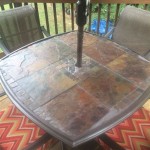Outdoor Patio Concrete Paint: Enhancing and Protecting Your Outdoor Space
Concrete patios, while durable and versatile, can often appear bland and uninviting. Outdoor patio concrete paint offers a practical and aesthetically pleasing solution to revitalize these spaces. This article will delve into the various aspects of outdoor patio concrete paint, including its benefits, types, application process, and factors to consider when selecting the right product. The goal is to provide comprehensive information to assist in making informed decisions regarding the enhancement and protection of your concrete patio.
Why Paint Your Concrete Patio?
Painting a concrete patio extends beyond simply adding color. It provides a protective barrier against the elements, minimizes wear and tear, and contributes to the overall value and appeal of the property. This section will outline the key benefits of opting for concrete paint for outdoor patios.
Aesthetic Enhancement: Concrete, in its natural state, lacks visual warmth and can appear monotonous. Paint provides an opportunity to introduce color, texture, and patterns, transforming a drab concrete slab into an extension of the living space. A wide range of color options allows customization to match existing landscaping, architectural styles, and personal preferences. Furthermore, techniques like stenciling, staining effects, and creating faux finishes can dramatically enhance the aesthetic appeal. Properly applied paint hides imperfections like minor cracks or stains, resulting in a cleaner and more polished appearance. The ability to personalize the patio's look can significantly increase enjoyment of the outdoor space.
Protection from the Elements: Concrete, although durable, is porous and susceptible to damage from water, sunlight, and temperature fluctuations. Water penetration can lead to cracking and spalling, particularly in regions with freezing temperatures. UV rays can cause fading and discoloration, diminishing the aesthetic quality of the concrete. Paint acts as a sealant, preventing water intrusion and protecting against UV damage. By creating a barrier, the paint minimizes the potential for weather-related deterioration, extending the lifespan of the concrete patio. Specific paint formulations are designed to resist mildew and mold growth, further protecting the surface and contributing to a healthier outdoor environment.
Increased Durability and Longevity: A painted concrete patio is inherently more resistant to abrasion and wear than an unpainted surface. The paint layer provides a protective shield against foot traffic, furniture movement, and other forms of physical stress. This reduced wear translates to a longer lifespan for the concrete itself, saving on potential repair or replacement costs in the long run. Certain paint types, such as epoxy-based paints, offer exceptional durability and resistance to chemicals, making them suitable for patios that frequently experience spills or heavy use. The added layer of protection effectively strengthens the concrete surface, contributing to its overall resilience.
Ease of Cleaning and Maintenance: Painted concrete surfaces are significantly easier to clean and maintain compared to bare concrete. The smooth, non-porous surface created by the paint prevents dirt, grime, and stains from penetrating deep into the concrete. Simple cleaning methods, such as sweeping and washing with soap and water, are usually sufficient to maintain a clean and attractive patio. The resistance to staining minimizes the need for harsh chemicals or abrasive cleaning agents, preserving the paint's integrity and appearance. Regular maintenance is simplified, allowing for more time to enjoy the outdoor space with minimal effort.
Types of Outdoor Concrete Patio Paint
The selection of the appropriate type of paint is crucial for ensuring optimal performance and longevity. Different paint formulations offer varying degrees of durability, resistance, and aesthetic qualities. This section will explore the common types of outdoor concrete patio paint, outlining their characteristics and applications.
Acrylic Latex Paint: Acrylic latex paint is a widely used and versatile option for painting concrete patios. It offers good adhesion, durability, and UV resistance, making it suitable for a variety of climates. Acrylic latex paints are water-based, making them easy to apply and clean up. They also tend to be more environmentally friendly than oil-based paints. Acrylic latex paint is available in a wide range of colors and finishes, allowing for customization to suit different aesthetic preferences. While acrylic latex paint is a good choice for many patios, it may not be the most durable option for high-traffic areas or patios exposed to harsh chemicals. It is typically a more cost-effective option compared to epoxy or urethane paints.
Epoxy Paint: Epoxy paint is a two-part system that mixes a resin and a hardener to create a highly durable and chemical-resistant coating. Epoxy paints are known for their exceptional adhesion, hardness, and resistance to abrasion, making them ideal for high-traffic patios and areas prone to spills or stains. They are also resistant to oil, grease, and many chemicals. Epoxy paints provide a smooth, glossy finish that is easy to clean and maintain. However, epoxy paints can be more difficult to apply than acrylic latex paints, requiring careful mixing and application techniques. They also tend to be more expensive. Epoxy paint is a strong contender for patios that require robust protection and a long-lasting finish.
Urethane Paint: Urethane paint offers a combination of durability, flexibility, and UV resistance. It is often used as a topcoat over epoxy paint to enhance its UV protection and abrasion resistance. Urethane paints are known for their ability to withstand extreme weather conditions and high foot traffic. They provide a durable, glossy finish that is resistant to scratches and scuffs. Urethane paints are more flexible than epoxy paints, making them less prone to cracking or chipping in areas with temperature fluctuations. They can be more expensive than acrylic latex paints but offer superior performance in demanding environments. Urethane offers a solid choice for achieving a balance of durability and weather resistance.
Concrete Stain: While technically not a paint, concrete stain is another popular option for coloring concrete patios. Concrete stains penetrate the concrete surface, creating a translucent color that enhances the natural variations and textures of the concrete. Concrete stains are available in a variety of colors and can be used to create unique and decorative effects. They are highly durable and resistant to fading, chipping, and peeling. Concrete stains do not form a film on the surface of the concrete, allowing the concrete to breathe and preventing moisture buildup. However, concrete stains do not provide the same level of protection as paint and may not be suitable for patios that require a waterproof barrier. They are an excellent option for those seeking a natural-looking and durable color solution.
The Application Process: A Step-by-Step Guide
Proper preparation and application are essential for achieving a long-lasting and aesthetically pleasing finish. This section will provide a detailed guide on how to prepare the concrete surface, apply the paint, and ensure optimal results.
Surface Preparation: The success of any concrete painting project hinges on thorough surface preparation. Begin by cleaning the concrete patio thoroughly to remove dirt, debris, oil, grease, and any existing coatings. Use a pressure washer with a concrete cleaner to remove stubborn stains and grime. Repair any cracks, holes, or imperfections in the concrete using a concrete patch repair compound. Allow the patch to dry and cure according to the manufacturer's instructions. Once the concrete is clean and repaired, etching the surface is crucial to improve adhesion. This can be achieved using a muriatic acid solution (always follow safety precautions and instructions carefully) or a commercial concrete etching product. Rinse the surface thoroughly to remove any residue from the etching solution. Allow the concrete to dry completely before proceeding to the next step. A clean, sound, and properly etched surface is the foundation for a successful paint job.
Priming the Concrete: Applying a concrete primer is essential for ensuring proper adhesion and a uniform finish. A concrete primer helps to seal the surface, creating a consistent base for the paint. Choose a primer specifically designed for concrete surfaces and compatible with the type of paint you will be using. Apply the primer evenly using a roller or brush, following the manufacturer's instructions. Allow the primer to dry completely before proceeding to the next step. Priming will improve the paint's adhesion, prevent it from being absorbed unevenly into the concrete, and extend its lifespan.
Painting the Concrete: Once the primer is dry, you can begin painting the concrete patio. Apply the paint evenly using a roller, brush, or paint sprayer, following the manufacturer's instructions. Apply thin, even coats to avoid drips and runs. Allow each coat to dry completely before applying the next. Multiple thin coats are preferable to one thick coat, as they provide better coverage and durability. Pay attention to edges and corners, ensuring they are properly coated. If using a paint sprayer, practice on a piece of cardboard or scrap material to get a feel for the sprayer's settings and technique. Consistent application and adequate drying time between coats are key to achieving a professional-looking finish.
Curing and Sealing: After the final coat of paint has dried, allowing it to cure completely is crucial for achieving maximum durability and longevity. Follow the manufacturer's instructions for curing time, which can vary depending on the type of paint and environmental conditions. Applying a concrete sealer can further protect the paint from wear, UV damage, and moisture penetration. Choose a sealer specifically designed for concrete and compatible with the type of paint you used. Apply the sealer evenly using a roller or sprayer, following the manufacturer's instructions. Proper curing and sealing will extend the life of the paint and protect your concrete patio from the elements.

How To Paint A Concrete Porch Or Patio
:max_bytes(150000):strip_icc()/faux-painted-rug2-5d0d2b1a8ddd4c60a39ffd329840874e.jpg?strip=all)
19 Painted Concrete Patio Designs

The Solution To Decorating Concrete Patios Porches

Before And After Painted Concrete Patio Thistlewood Farm

Behr Premium 1 Gal 720f 4 Stone Fence Low Re Enamel Interior Exterior Porch And Patio Floor Paint 630001 The Home Depot

10 Painted Concrete Patio Floor Ideas Jamie Lundstrom
:max_bytes(150000):strip_icc()/cement-tile-1-of-1-683x1024-f5a283b105e04abf8729e7390f9148bc.jpg?strip=all)
19 Painted Concrete Patio Designs

39 Painted Concrete Porch Ideas Transform Your Outdoor Space

Before And After Painted Concrete Patio Thistlewood Farm

Behr Premium 5 Gal M200 Terra Cotta Clay Low Re Enamel Interior Exterior Porch And Patio Floor Paint 630005








